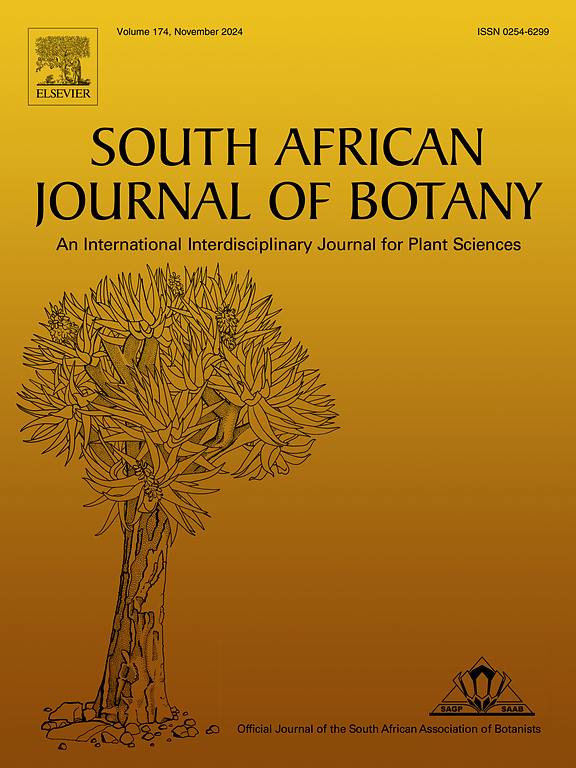Botanical properties, traditional use, pharmacological activities, and potential therapeutic applications of phytochemicals derived from Cussonia species
IF 2.7
3区 生物学
Q2 PLANT SCIENCES
引用次数: 0
Abstract
Background
Cussonia (Araliaceae) species characterized by thick woody stems and umbrella-like canopies encompasses various species native to Africa and used in folk medicine for diverse therapeutic properties. This review highlights Cussonia’s botanical features, diverse therapeutic uses of extracts and phytochemicals derived.
Methods
This systematic literature search on Cussonia species, using major databases like Biodiversity, Google Scholar, PubMed, Science direct, Springer and Web of Science until August 2024, identified studies on their botanical properties, traditional uses, phytochemicals including Phenolic compounds, Terpenoid, Flavonoid, Tannin and Alkaloid, and pharmacological activities. Data were systematically extracted, organized, and synthesized.
Results
The diverse pharmacological profiles of over 100 compounds isolated from 30 Cussonia species highlight their significant therapeutic potential, making them promising candidates for the development of novel antibiotics, management of chronic diseases related to oxidative stress and inflammation, diabetes treatment, and adjunctive cancer therapies. However, the challenges faced are chemical variability, standardization, and sustainability concerns. Moreover, a lack of toxicity studies and clinical trials were observed with only information regarding the mechanisms of action for almost all extracts and compounds of the Cussonia genus present.
Conclusion
Cussonia species crude extract and isolated compounds have shown therapeutic potential for managing diseases, including antioxidant, anticancer, anti-inflammatory, and antimicrobial effects.
虎耳草植物化学物质的植物特性、传统用途、药理活性和潜在的治疗应用
库苏木(五加科)以其厚实的木质茎和伞状树冠为特征,包括多种原产于非洲的物种,在民间医学中具有多种治疗特性。本文综述了库桑树的植物学特征、提取物和植物化学物质的多种治疗用途。方法利用生物多样性、谷歌Scholar、PubMed、Science direct、b施普林格、Web of Science等主要数据库,于2024年8月对库苏木进行了系统的文献检索,对库苏木的植物特性、传统用途、酚类化合物、萜类化合物、黄酮类化合物、单宁和生物碱等植物化学成分以及药理活性进行了研究。系统地提取、组织和合成数据。结果从30种库苏亚属植物中分离到的100多种化合物具有不同的药理特征,具有重要的治疗潜力,可用于新型抗生素的开发、氧化应激和炎症相关慢性疾病的治疗、糖尿病治疗和辅助癌症治疗。然而,面临的挑战是化学变异性、标准化和可持续性问题。此外,缺乏毒性研究和临床试验,只有关于作用机制的信息,几乎所有的虎sonia属的提取物和化合物存在。结论虎耳草粗提物及其分离化合物具有抗氧化、抗癌、抗炎、抗菌等治疗疾病的作用。
本文章由计算机程序翻译,如有差异,请以英文原文为准。
求助全文
约1分钟内获得全文
求助全文
来源期刊

South African Journal of Botany
生物-植物科学
CiteScore
5.20
自引率
9.70%
发文量
709
审稿时长
61 days
期刊介绍:
The South African Journal of Botany publishes original papers that deal with the classification, biodiversity, morphology, physiology, molecular biology, ecology, biotechnology, ethnobotany and other botanically related aspects of species that are of importance to southern Africa. Manuscripts dealing with significant new findings on other species of the world and general botanical principles will also be considered and are encouraged.
 求助内容:
求助内容: 应助结果提醒方式:
应助结果提醒方式:


